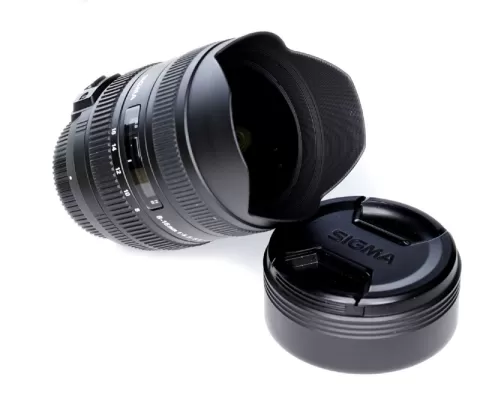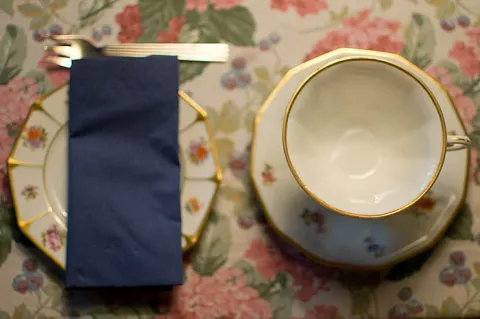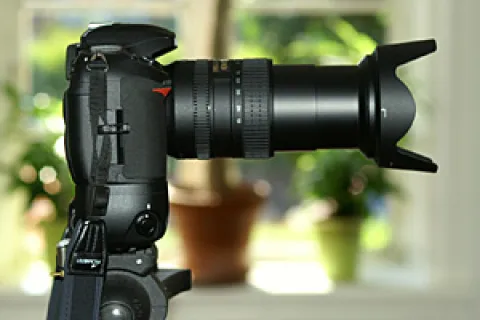For some reason some photographers seem to think that a 35mm lens is about as boring and bland as a lens can get. I beg to differ.
For the sake of simplicity, I call a 35mm lens 35mm when it acts as a “true” 35mm would on a full frame or 24*36 film camera. There's more on that in the end of this article, but first a little on why the 35mm lens is interesting.
The angle of view of a “true” 35mm lens is 63.4 degrees diagonal (the most common way of measuring) or 37.8*54.4 degrees (vertical*horizontal). This might not mean much to most people, but in terms of photography it's wideangle, but not very wide. Compared to the human eye it's about half of what we see vertically and a third to a fourth of what we see horizontally. In other words: much less than we actually register with our eyes.
But the 35mm has a field of view which is probably much like the area that we focus on and interpret when we look. Some say that a 50mm lens – commonly called a normal lens – is closer, but I personally think the 35mm covers my “concentrated field of vision” quite well, and I personally think that the reason why the 50mm has become the "normal lens" is not because it was designed with the human physiology, vision and brain as an outset, but more likely because it was the easiest and cheapest lens to produce in a really good quality for 35mm film cameras, and was the one "normally" mounted on or delivered with the camera. In that respect I seem to disagree with basically any explanation of the term "normal lens" I can find, so I might be completely wrong there.
For me a "real" 35mm lens is also a prime, in other words a fixed focal length lens, and it doesn't hurt if it's a bright lens too, like in f/1.8 or even f/1.4, which is often the case. Many are even compact and lightweight. Not all, but many. Combine those things, and you have a really great and useful lens.
There isn't much drama or enhanced perspective to be had from a 35mm lens. There's no distortion of lines and no compression of perspective. Most 35mm lenses are quite bright and have a fairly shallow depth of field. They can of course be stopped down to get more. I can easily see why some people find images from this type of lens a bit boring when compared to a dramatic in-your-face wideangle shot or the intense isolation of a subject that's seen in a shot from a telephoto lens like a 200-300mm or even longer.
I tend to think that it's exactly this lack of drama that attracts me to the 35mm. It's a very “honest” lens that doesn't give or take much, but really leaves it in the hands of the photographer to get an exciting image. The subject will dominate and will not be helped by some optical effect – or come out bad if the lens is not used right. Loose focus with 300mm and you get blur. Too long a shutter speed: shake. Tilt a wideangle: falling lines. Be careless with an ultrawide: distortion ensues. The 35mm forgives more, but helps less.
The capabilities makes the lens great for a lot of applications:
Event photography The typical brightness combined with low weight and small size makes it a great lens to use walking around among people at an event,m simply shooting left and right. Few people will notice if the camera isn't the largest SLR and you defer from using a flash, which is easily possible combining a bright aperture with the high ISO possible on many modern cameras. And the angle is great: you get close, but no in the face, and you can get perspective unless the space is really crammed
Portraits While the 35mm might not be perfect for close headshots, it's more than fine for staged, full body or almost full body portraits, shot in an environment. It can offer shallow depth-of-field if you want it, but also give a great combination of person or persons and the surrounding objects. A good 35mm will definitely not be a bad choice for fashion or group shots.
Street photography The 35mm is a lens that's used by many street photographers. It seems to present a suitable combination of wideangle that will catch the environment and still allowing the photographer to isolate a subject like a person. It's typical lack of size and "intimidation effect" helps.
Photojournalism If faced with an assignment of documenting an event, the people, the area and what usually will go into a photo report, the 35mm can perform on almost all parameters. It won't do sport in the traditional sense, but certainly conflict, celebrity, behind-the-scenes, ambiance and many other styles expected to be included in a normal journalistic series of images.
Arcitecture People shooting buildings an interiors often struggle with perspective, and want images with as little distortion as possible: no straight lines shown curved, so parallel lines shown as non-parallel. This is what the 35mm does really well. The perspective isn't "real estate wide", showing every room in ballroom size, but mostly wide enough to show buildings in a pleasing way, both inside and outside.
Landscape Even though many - modern landscape photographers in particular - might argue that a 35mm isn't wide enough for the largest of vistas, quite a lot of really great landscape pictures have been shot with 35mm lenses, and they ere generally wide enough to capture the grandeur of the great outdoors. If you want more foreground or sky, you can always turn the camera and shoot portrait. As has been demonstrated by many classic landscape photographers: there's more to landscape than east to west perspective and swooping high skies. A legendary landscape like Ansel Adams rarely used wideangles on his many cameras, and still shot some truly stunning and iconic landscape photos.
Travel For the same reasons as many of the above, selecting a single, lightweight 35mm prime as your travel lens might not be the worst choice. It will do the job in a vast majority of situations, and rarely let you down.
I own a few lenses that can be categorized as 35mm in one way or the other. The reason for this somewhat convoluted way of saying things is that 35mm isn't really 35mm any more.
Let me explain: when a majority of the world's pictures were shot on 24*36mm film, a 35mm lens was exactly 35mm in focal length. You stuck a 35mm on your camera, and you'd get that slightly wide, very neutral, quite pleasing angle of view.
Do the same thing on a full frame camera today, and you get the same result.
The thing is that it's not that simple any more. The vast majority of cameras are not full frame as in 24*36mm, but smaller, and that means that a 35mm is no longer just 35mm. Its focal length is still 35mm. That won't change no matter what camera you mount it on. But what the camera sees, depends on the sensor size.
On my Nikon DX/APS-C sensor bodies, a lens with a nominal 35mm focal length acts more like a 50mm lens on a full frame camera – 53.2mm to be exact. The fixed 23mm lens on my Fuji X100, which is also APS-C, is actually very much like a FF 35mm – 34.96mm for the ones who want decimals.
Confusing? It sure is.
So getting the 35mm look in my images on the DX bodies requires a wider lens than one that is 35mm. I have a 20mm f/1.8 and that's very close to being 30mm on my DX SLR's. I also have a 30mm f/1.4, which acts like a 45mm lens when it's mounted on a body with a smaller sensor, and the long end of my Sigma 10-20 also has an angle of view around that of a 30mm, and with the zoom set at around 22-23mm both my Nikon 17-55mm and my Sigma 18-35mm lenses can also stand in as 35mm-style lenses.
Confusing? It sure is!
I use my Sigma 20mm f/1.8 on DX much as I would a 35mm on a full frame body. The 23mm lens on my beloved Fuji X100 also performs as the perfect 35mm. Back in my film days I also had a 35mm f/2.8 Minolta MD, which of course not only worked like a 35mm, it was a 35mm. After having acquired a full frame body - the Nikon D700 - I'm looking into a "real" 35mm for FF. As much as I'd like to buy Nikon's 35mm f/1.4, it is rather expensive (1600 USD). The recent f/1.8 offering from Nikon is more reasonable at way less than half the price of the 1.4m (600 USD), but with my long time love for Sigma, I'll probably opt for the 35mm f/1.4 Art from them for a little more (900 USD). The Sigma has gotten some rave reviews, and I'm pretty happy with their 18-35mm f/1.8 Art, but that's "only" for DX.
My 35mm-ish lenses:
Nikon 35mm f/1.8 – actually more like a 50mm on my DX cameras.
Sigma 30mm f/1.4 – DX lens, more like a 45mm angle of view.
Sigma 20mm f/1.8 – quite close to 30mm on the DX cameras.
Fuji X100 23mm f/2 – very close to a true 35mm angle of view on this camera.
Sigma 10-20mm – again close to 30mm angle of view in the “long” end on DX.
Sigma 18-35mm f/1.8 – A bright zoom lens that covers the 35mm angle on DX.
Nikon 17-55mm f/2.8 – set to 23mm it's also as a 35mm angle of view on DX.
I love all these lenses and use them a lot. The 20mm on a DX body and the Fuji is definitely my favorites, but both the 35 and the 30mm get their fair share of use even though they are a bit closer to a normal lens than an actual 35mm on the crop sensor bodies.













